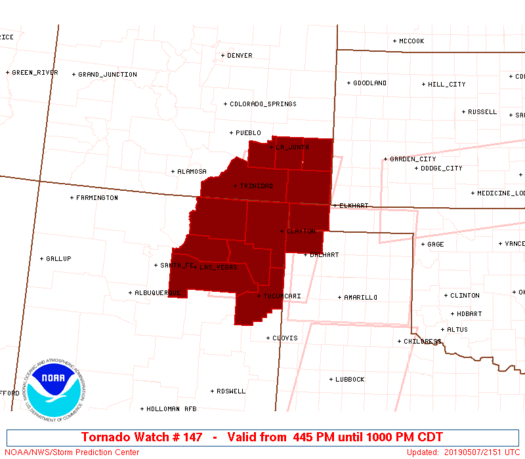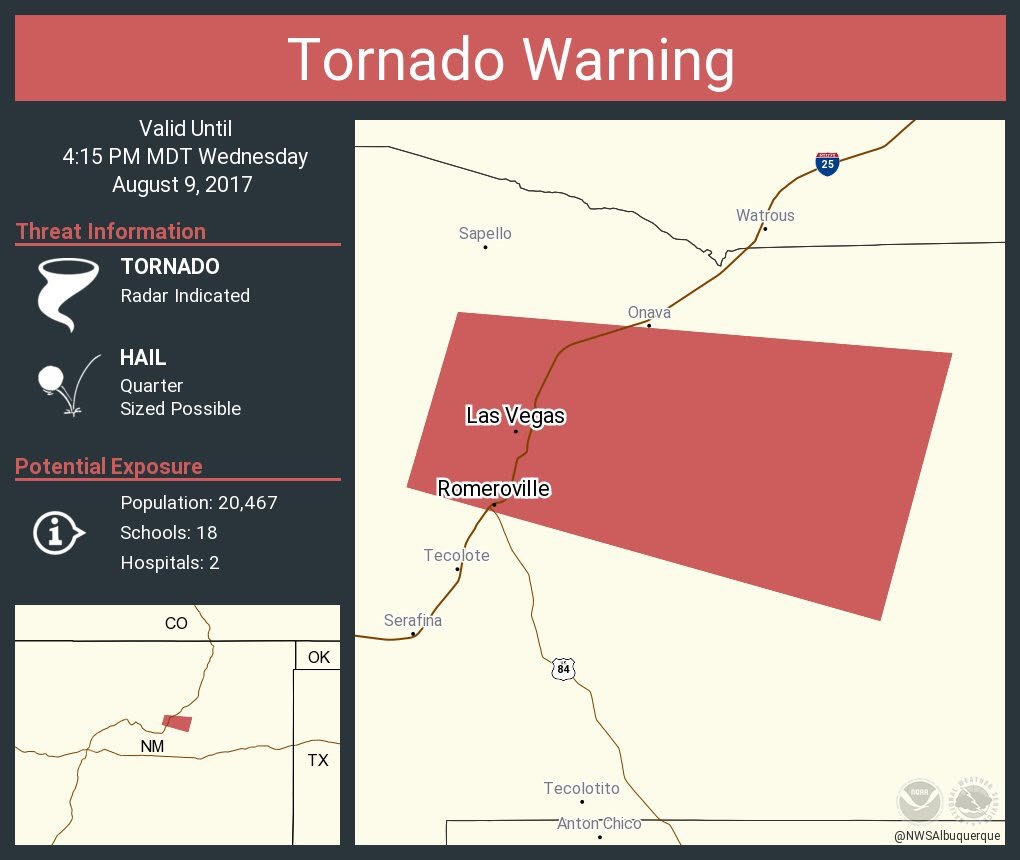
A tornado is a violently rotating column of air that is in contact with both a cumulonimbus cloud and the ground. Tornadoes are one of the most destructive forces of nature, and there is no place that is immune to a tornado. The winds in a tornado can reach over 300 miles per hour which can destroy well-made structures, uproot trees, and turn ordinary objects into dangerous missiles. Your safety during a tornado depends on you being prepared and staying aware.
Ready...Most hazardous weather is forecast days in advance. Begin your preparations by paying attention to the weather forecast. The Key Impacts Graphic is a great product issued by the National Weather Service that highlights the potential for hazardous weather over the next seven days.
Set...If tornadoes are possible, then a Tornado Watch will be issued. This does not mean that tornadoes will occur, only that they are possible. This means that conditions are favorable for tornadoes, and you need to pay attention and stay aware in case they do happen. Listen to your NOAA weather radio or tune in to your local broadcast media for the latest information. Have a plan in place that includes where you will go in case a warning is issued.
Go! When a tornado is occurring or is imminent, the National Weather Service will issue a Tornado Warning. This means that you need to implement your plans to protect yourself.
 |
 |
| When tornadoes are possible, a Tornado Watch will be issued. Tornado Watches are issued for multiple counties and are in effect for several hours. This is your notification that you need to stay aware and be prepared to take action should a warning be issued. | When a tornado is occurring or is imminent, a Tornado Warning will be issued. A Tornado Warning is a storm-based warning in the form of a geographic polygon, and it is typically in effect for 30 to 45 minutes. This is your notification that you need to act and seek shelter. |
|
Damage from a tornado in Roswell on May 5, 2015. Photo by Karen Sanders. |
There is no guaranteed safe place during a tornado, but you can survive a tornado by taking necessary safety precautions. If a Tornado Warning is issued for your area, seek shelter immediately. If you have a tornado shelter or basement, seek shelter there. If that is unavailable, go to the lowest floor of your home and shelter in an interior room away from windows, such as a closet or a bathroom. Put as many walls between you and the outside as possible. Get under something sturdy, like a heavy table, and cover yourself with blankets or a mattress for added protection. Consider putting on a helmet as head injuries are the leading cause of death in a tornado. |
|
If you are caught outside or are driving during a tornado, find shelter inside a sturdy building immediately. Neither a mobile home nor a car is safe during a tornado. If no nearby shelter is available, abandon your car or mobile home and get to a low-lying area such as a ditch. Get down and cover your head. No matter how tempting is, never seek shelter under an overpass. They are one of the worst places to seek shelter, and it puts you and everyone around you in increased danger. The area under an overpass serves as a wind tunnel. As winds are funneled through the narrow structure of an overpass, its speed increases.
|
|
|
While tornadoes are most common during the months of April, May, and June, tornadoes can happen anytime of the year. Contrary to popular myths, tornadoes can even happen in mountainous areas and over bodies of water. Your location is not immune to the possibility of a tornado, and the time to prepare is now. |
Tornado in Dora, New Mexico on May 29, 2015. Photo by Christian Cleary. |